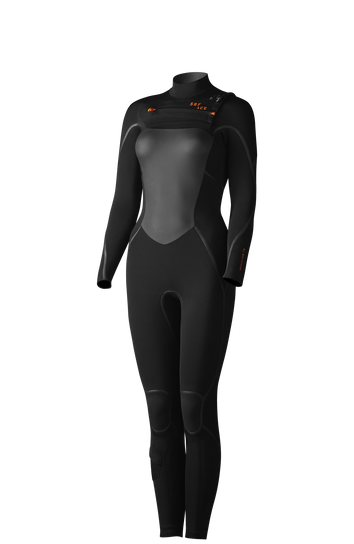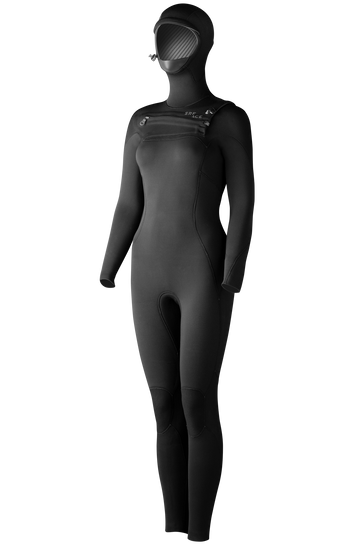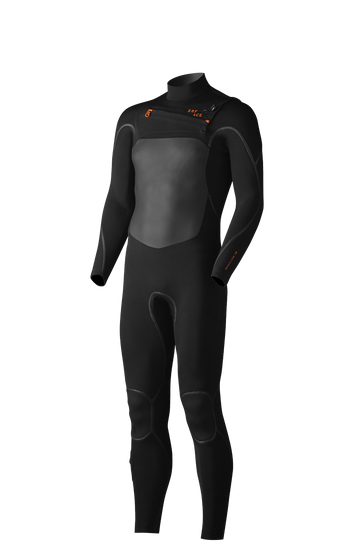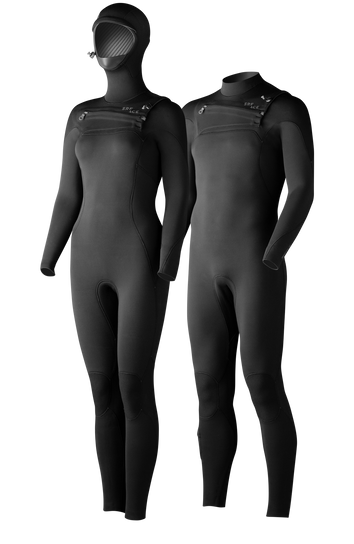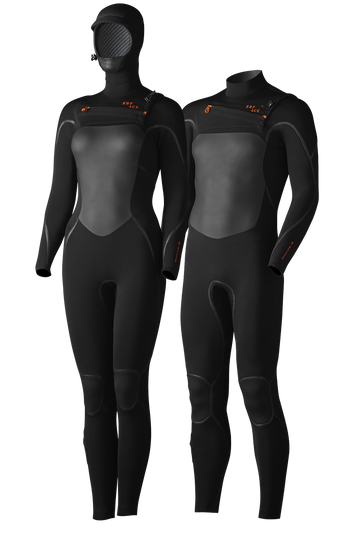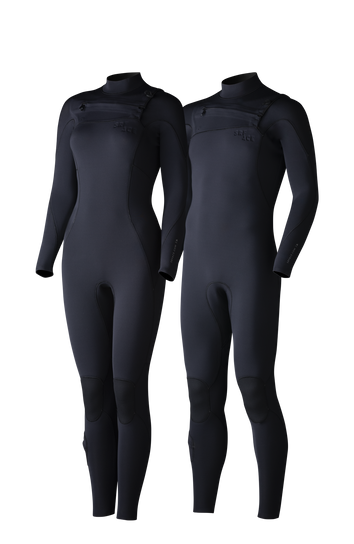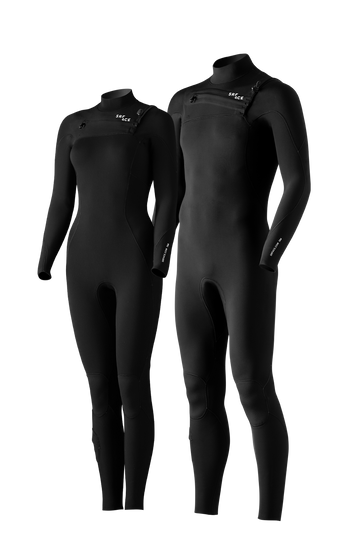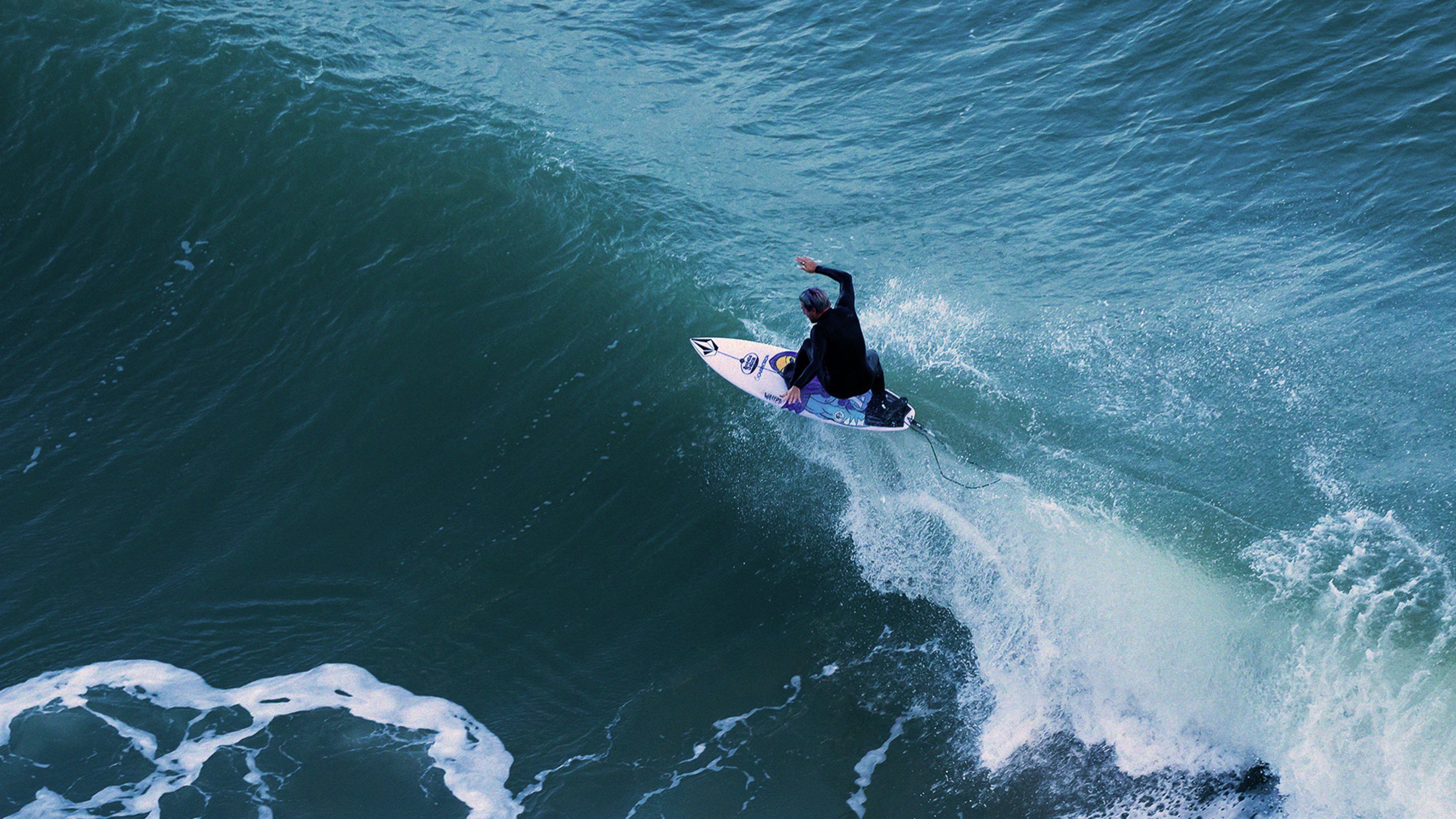
WETSUIT ZIPS
Wetsuit zips have changed a lot since the 1950s, when they were first introduced. Zips used in wetsuits come in 3 main options. Firstly, traditional back zips for easy entry and exit. Secondly, chest zips. Chest zips quickly gained in popularity in recent years. You’ll usually find chest zips in more flexible high-end wetsuits. Lastly, the zip free or zipless wetsuits. These eliminate the stiff zip from the wetsuit altogether, allowing for more flex. But also a zip free wetsuit has some disadvantages.
BACK ZIP
Back zip wetsuits are becoming less common these days. The back zip makes it easy to take your wetsuit on and off. However, these wetsuits score lower on insulation and fit. The collar construction is different from a chest zip. A velcro closure in the neck, together with an optional panel behind the zip, prevent water from entering the wetsuit. A back zip is usually longer than a chest zip. This makes back zip wetsuits less flexible, as the zip itself isn’t flexible. A shorter zip means more flexibility but makes the suit harder to get into. So if you struggle to get into a wetsuit, a back-zip wetsuit might be the best option for you. If you are more athletically built however, a chest zip is the way to go.

CHEST ZIP
Chest zip wetsuits, also known as front zip wetsuits, have slowly become the new standard in wetsuit design. A chest zip allows for a better fit and better insulation. With todays flexible neoprene it has also become easier to take your chest zip wetsuit on and off. A zip on the front of your wetsuit is shorter than a zip on the back. A zip is the only part of the wetsuit that isn’t flexible, so the shorter the zip, the more flexible the wetsuit. Shorter zips might, unfortunately, make it harder to get in and out of your wetsuit.
Choose your wetsuit
ZIPLESS, A ZIP FREE WETSUIT
Zipless wetsuits or zip free wetsuits have removed the traditional chest zip and have replaced it by a slightly bigger shoulder opening. It’s harder to get in and out of of zipless wetsuits, so be prepared for a bit of a wrestle with your wetsuit before your surf. The bigger shoulder opening can also allow water to enter. But in contrast, zip free wetsuits gain some extra flexibility.

YKK ZIP
YKK zips are the standard in zip technology. This market leader in zip manufacturing makes high quality wetsuit zips that don’t get corroded by seawater. YKK also makes 100% waterproof zips used in drysuits, coated semi-dry zips and zips that let some water through for summer wetsuits.
WETSUIT ZIP SPECIFICATIONS
There are lots of different zip manufacturers, zip specifications and zip sizes available suitable for use in wetsuits. Firstly, a good wetsuit zip should be built to withstand the forces it experiences while you surf and when taking the wetsuit on and off. Usually the best zip-type is a coated metal slider or runner combined with plastic teeth. Because wetsuit zips need to withstand salt water corrosion, the slider needs to be made of stainless steel. Alternatively the zip can be coated for protection against corrosion. Using a plastic slider increases the chances of breaking the zip when taking on and off your wetsuit. Nylon coil zippers are not suitable to use in wetsuits, they let too much water through.

WATERPROOF ZIPPERS
There are different grades of waterproof zips. A standard zip has plastic teeth close together with a slight overlap to block water. It will let some water seep through, but it’s blocked by a layer of neoprene behind the zip. In contrast, waterproof zips often have zip teeth that overlap each other. The teeth create an interlocking pattern that blocks water. However, these zips are still not 100% waterproof. Also remember, water can also enter the wetsuit through the shoulder opening. So spending money on a 100% waterproof zip is not always worth it.
DRYSUIT ZIPPERS
Only zips used in drysuits are 100% waterproof and airtight. These zips are closed-end zips, as opposed to the normal open end wetsuit zips. This means that both ends of the zips are stitched into the wetsuit. These dry zippers are fully water- and airtight to avoid any leaks to make it into a drysuit. These suits are baggy and made out of nylon or polyester waterproof fabric. Drysuits are rarely used for surfing but can be used for sailing, diving and kiteboarding.
Featured wetsuits
ZIP SIZES
Zippers come in various sizes and lengths. The smallest suitable zip size is size 5, this is the width of the zip. A more common zip size for wetsuits is 8. The bigger the zip size, the bulkier the zip, but also the stronger the sip is. Zip lengths vary from about 20cm on the smallest chest zip size wetsuits to about 60cm on the longest back zip wetsuit sizes.

Ready to surf?
Shop from €159



